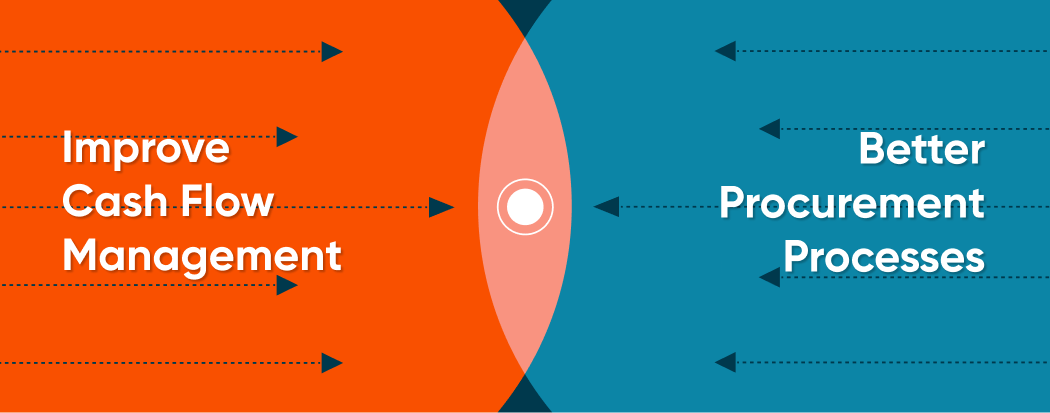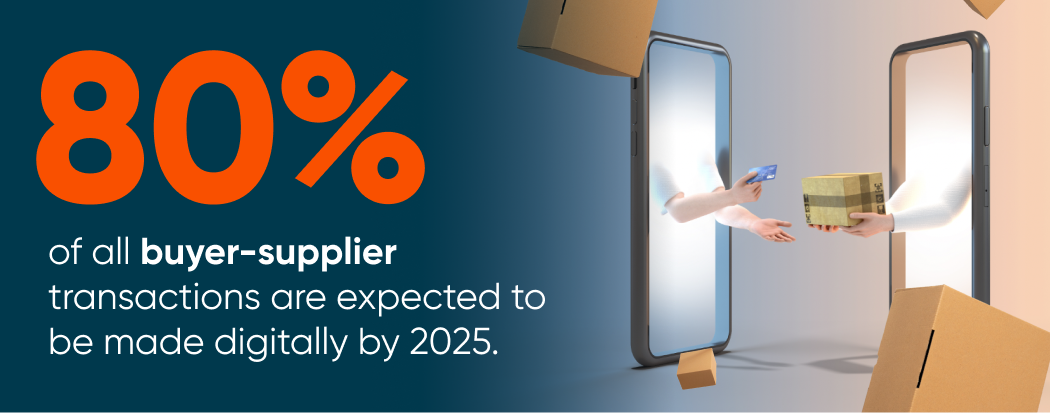5 Steps - Creating a Strategic Procurement Process
Minimize risk with a strategic procurement plan
How better procurement processes can improve cash flow management in your organisation

|
If your business isn’t yet investing in quality procurement processes to improve cash flow management, now’s the time.
Organisations of all sizes must treat cash flow management as a significant priority, considering how it affects long-term financial health. Optimizing your procurement processes gives you better odds at consistently achieving positive cash flow levels.
But how can you optimize your procurement processes? Keep reading to find out.
What is procurement?
First, let’s cover in more detail what procurement is.
Procurement refers to the range of activities involved in gaining goods or services. Procurement teams in businesses work to find competitively priced products that provide the most value for the company.
Some procurement activities include:
Procurement is an essential business function. When managed and performed well, it will significantly increase a company’s profitability.
How procurement helps with cash flow management
By budgeting and forecasting, businesses get the visibility to track and validate costs, predetermining the amount of cash coming out of the organisation. By determining the outflow of money and providing that spending data to teams, a strong procurement strategy can be developed and become a key factor for successful cash flow.
For example, once budgets are approved by the business, procurement teams can establish budget controls to avoid overruns and update the cash flow forecast as required.

10 Procurement strategies to help cash flow management
1. Manage your inventory
Inventory levels will undoubtedly significantly impact cash flow management. By ordering too many products, you will be left with out-of-season or expired stock if it doesn’t sell. This results in significant waste and unnecessary storage and insurance costs.
On the other hand, insufficient stock will lead to missed sales and unhappy customers who may decide to look elsewhere.
To effectively manage your inventory, select departments should collaborate closely together to determine the levels of stock required and decide on standard rules for managing inventory. Investing in a procurement automation solution can be an excellent solution to help with this.
2. Choose the right suppliers
Selecting the right suppliers will have a substantial impact on cash flow. Be sure to look for the best deals, by comparing products and quotes to ensure you receive the greatest value from your vendors.
While it’s tempting to go for the cheapest offer, be sure to avoid compromising on the quality of the products, or additional services associated with them, such as insurance or timed delivery.
In fact, when assessing suppliers, consider lead times carefully. Waiting too long to receive goods without it being a factor in your planning will also affect your cash flow.
Be wary of minimum and maximum order quantities, too. While these may initially provide considerable savings ak.a. economies of scale, they will typically require a greater cash outlay and may leave you at risk of having too much stock in your inventory.
When selecting a supplier, it is crucial to maintain a strong working relationship with them and continuously monitor their performance. Healthy and trusting supplier relationships are essential for flexible payment terms, consistent quality, and on-time delivery.
3. Use data analytics and key performance indicators (KPIs)
Procurement data isn’t solely helpful for managing inventory or sourcing the best prices or terms.
Analytics will be key to:
Without data, businesses will struggle to use the right KPIs to measure and adjust every part of the procurement ecosystem. Internal performance KPIs can track metrics such as the percentage of invoices paid on time and correct three-way matches.
It would also be possible to create and assess vendor management KPIs to examine supplier performance and compliance. This will determine the best suppliers and give insight on whether there is a need to replace some of them.
Data analytics and setting measurable KPIs will build strength into your supply chain, enabling the business to remain flexible and responsive during positive times and crises such as the COVID-19 pandemic.
4. Negotiate early payment discounts with suppliers
Procurement teams and vendors often have different agendas when it comes to cash flow management. Procurement teams want to hold onto money for as long as possible, while vendors want to speed up how long customers take to pay; the earlier, the better. One way to satisfy both needs is with early payment discounts.
Early payment discounts refer to vendors providing invoice discounts for payments on specific dates.
An automated accounts payable tool can help organisations quicken their invoice lifecycle and source early payment discounts more regularly. Depending on the business size, these savings could be up to thousands or even millions.
5. Consider dynamic discount management (DDM)
Large businesses and enterprises working with complex supply chains and various suppliers tend to pay them using different payment terms than smaller organisations. This is when dynamic discount management can be more beneficial than early payment discounts.
DDM works off supply and demand to control the price that customers pay. DDM solutions help to show every possible savings opportunity to enable buyers to see discount terms and approaching due dates at any time.
With static early payment discounts, costs and dates are predetermined and agreed upon. However, with DDM, buyers and suppliers can communicate how and when discounts are offered and accepted.
For example, early payment discounts’ percentage or amount will decrease as payment deadlines approach. This allows buyers and suppliers to fix and select discounts per their business and financial needs.
DDM solutions provide vendors with better insight into their invoice statuses, enhancing their ability to offer customised discount rates for specific goods. These solutions improve relationships with vendors and their supply chain efficiency.
6. Use automated invoice processing
Processing invoices will take a lot of time when done manually, which ultimately represents a cost for the business. Processing a single invoice can cost as much as $15.97, taking up to 45 days to process.
However, automation solutions like Robotic Process Automation (RPA) can help businesses reduce invoice processing costs and lifecycles, saving money and improving cash flow management.
7. Opt for electronic payments
Cheques have traditionally been the most common type of payment between businesses and vendors. However, 80% of all buyer-supplier transactions are expected to be made digitally by 2025.

Today, organisations can and should make use of electronic payment tools to automate payments - allowing more efficient and controlled cash flow management and allowing for saving in the long-run.
Two of the most popular types of electronic payment methods in B2B transactions are purchasing cards (P-Cards) and automated clearing house (ACH).
8. P-Cards
P-Cards are easy to implement and help capture discounts. Some P-Cards allow invoices to be paid and discounts to be captured on the same day. Instead of paying a supplier within a 30-day timeframe, businesses can keep capital for longer to explore more options on how to conduct their operations.
Likewise, using P-Cards eliminates the costs linked with printing and mailing cheques.
9. Automated clearing house (ACH)
The ACH network is a system that allows businesses to collect single-entry or recurring payments electronically. This occurs by directly and automatically debiting customer checking or saving accounts.
The payments are created once the supplier permits the business to debit directly from their account. The vendor’s bank also takes the ACH payment and combines it with other ACH transactions to be sent regularly throughout the day.
The recipient's bank receives the payment, reconciling both accounts and finishing the process.
Usually, ACH transactions cost the originator 29 cents. This is significantly cheaper than the usual $3 check payment cost.
Over the past two years, ACH B2B payments have gone up by 33.2%. The ACH Network experienced impressive growth in 2021, with 29.1 billion payments valued at $72.6 trillion.
10. Invest in comprehensive procurement solutions
Other digital technologies like artificial intelligence and even more advanced analytics can significantly improve cash flow in businesses. Investing in such technologies can be the trigger to a business's more comprehensive digital transformation strategy.
However, even for small businesses or organisations taking it slowly, looking at the availability of procurement solutions is an excellent place to start.
Many dedicated, comprehensive solutions will support procurement teams with almost all their tasks.
Some features of dedicated procurement solutions include:
While these procurement solutions may initially seem costly, moving to a digital procurement platform can improve cash flow management and lead to significant savings in the long run. Likewise, it can reduce the waste, costs, and environmental issues that come with paper-based processes.
|
Minimize risk with a strategic procurement plan
Procurement processes vary greatly depending on business needs.
Learn what an RFQ is in procurement, how it works, and why it matters. Discover key steps, benefits, challenges, and how platforms like Tradeling...